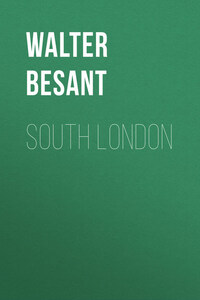1. THE FOUNDATION OF LONDON
PART I
'In the year 1108 B.C., Brutus, a descendant of Æneas, who was the son of Venus, came to England with his companions, after the taking of Troy, and founded the City of Troynovant, which is now called London. After a thousand years, during which the City grew and flourished exceedingly, one Lud became its king. He built walls and towers, and, among other things, the famous gate whose name still survives in the street called Ludgate. King Lud was succeeded by his brother Cassivelaunus, in whose time happened the invasion of the Romans under Julius Cæsar. Troynovant, or London, then became a Roman city. It was newly fortified by Helena, mother of Constantine the Great.'
This is the legend invented or copied by Geoffrey of Monmouth, and continued to be copied, and perhaps believed, almost to the present day. Having paid this tribute to old tradition, let us relate the true early history of the City, as it can be recovered from such documents as remain, from discoveries made in excavation, from fragments of architecture, and from the lie of the ground. The testimony derived from the lie of the ground is more important than any other, for several reasons. First, an historical document may be false, or inexact; for instance, the invention of a Brutus, son of Æneas, is false and absurd on the face of it. Or a document may be wrongly interpreted. Thus, a fragment of architecture may through ignorance be ascribed to the Roman, when it belongs to the Norman, period – one needs to be a profound student of architecture before an opinion of value can be pronounced upon the age of any monument: or it may be taken to mean something quite apart from the truth, as if a bastion of the old Roman fort, such as has been discovered on Cornhill, should be taken for part of the Roman wall. But the lie of the ground cannot deceive, and, in competent hands, cannot well be misunderstood. If we know the course of streams, the height and position of hills, the run of valleys, the site of marshes, the former extent of forests, the safety of harbours, the existence of fords, we have in our hands a guide-book to history. We can then understand why towns were built in certain positions, why trade sprang up, why invading armies landed at certain places, what course was taken by armies, and why battles have been fought on certain spots. For these things are not the result of chance, they are necessitated by the geographical position of the place, and by the lie of the ground. Why, for instance, is Dover one of the oldest towns in the country? Because it is the nearest landing ground for the continent, and because its hill forms a natural fortress for protecting that landing ground. Why was there a Roman station at Portsmouth? On account of the great and landlocked harbour. Why is Durham an ancient city? Because the steep hill made it almost impregnable. Why is Chester so called? Because it was from very ancient times a fort, or stationary camp (L. castra), against the wild Welsh.
Let us consider this question as regards London. Look at the map called 'Roman London' (p. 15). You will there see flowing into the river Thames two little streams, one called Walbrook, and the other called the Fleet River. You will see a steep slope, or cliff, indicated along the river side. Anciently, before any buildings stood along the bank, this cliff, about 30 feet high, rose over an immense marsh which covered all the ground on the south, the east, and the west. The cliff receded from the river on the east and on the west at this point: on either side of the Walbrook it rose out of the marsh at the very edge of the river at high tide. There was thus a double hill, one on the east with the Walbrook on one side of it, the Thames on a second side, and a marsh on a third side, and the Fleet River on the west. It was thus bounded on east, south, and west, by streams. On the north was a wild moor (hence the name Moorfields) and beyond the moor stretched away northwards a vast forest, afterwards called the Middlesex forest. This forest covered, indeed, the greater part of the island, save where marshes and stagnant lakes lay extended, the haunt of countless wild birds. You may see portions and fragments of this forest even now; some of it lies in Ken Wood, Hampstead; some in the last bit left of Hainault Forest; some at Epping.
The river Thames ran through this marsh. It was then much broader than at present, because there were no banks or quays to keep it within limits: at high tide it overflowed the whole of the marsh and lay in an immense lake, bounded on the north by this low cliff of clay, and on the south by the rising ground of what we now call the Surrey Hills, which begin between Kennington and Clapham, as is shown by the name of Clapham Rise. In this marsh were a few low islets, always above water save at very high tides. The memory of these islands is preserved in the names ending with ea or ey, as Chelsea, Battersea, Bermondsey. And Westminster Abbey was built upon the Isle of Thorns or Thorney. The marsh, south of the river, remained a marsh, undrained and neglected for many centuries. Almost within the memory of living men Southwark contained stagnant ponds, while Bermondsey is still flooded when the tide is higher than is customary.










